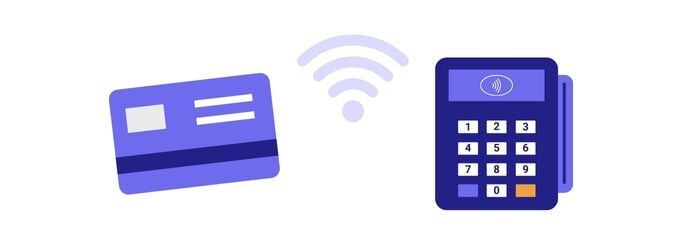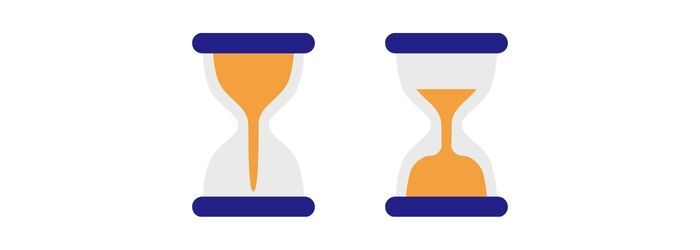.jpg) Applying for your first credit card can be overwhelming, especially with all the unfamiliar language in the application. There may be credit terms that don’t make sense or are confusing without proper context. This guide breaks down the most common credit card terminology so you can apply with confidence and stay informed.
Applying for your first credit card can be overwhelming, especially with all the unfamiliar language in the application. There may be credit terms that don’t make sense or are confusing without proper context. This guide breaks down the most common credit card terminology so you can apply with confidence and stay informed.
1. Annual fee
An annual fee is a charge you may be required to pay once a year for having a credit card. This yearly fee often helps cover account maintenance or other services.
2. Annual percentage rate (APR)
An annual percentage rate (APR) is the yearly interest you’re charged each year if you don’t pay your credit card bill in full. Some cards may have different APRs for purchases, cash advances, or balance transfers.
3. Authorized user
An authorized user is someone added to a credit card account by the main cardholder. You can use the card as an authorized user, but the primary cardholder is responsible for payments. This is a common way to help build your credit, as long as the issuer reports authorized user activity to credit bureaus.
4. Available credit
Available credit is how much you have left to spend on your card. It’s your credit limit minus the amount of money you owe, such as your balance and any pending charges.
5. Average daily balance
The average daily balance is how credit card companies figure out how much interest to charge if you don’t pay your full balance. Since your credit card balance changes throughout the month as you buy things or make payments, the company takes the average of what you owe each day. For example, you may owe $300 for the first 15 days, and then $600 for the next 15 days. Your average daily balance (and the amount you would owe interest on) is $450.
6. Balance
A balance is the total amount you owe on your credit card. For example, if you only use your card for a $50 grocery purchase, your balance will be $50. If you don’t pay this amount in full by the due date, interest will be added.
7. Balance transfer
A balance transfer is when you move all or part of your credit card debt from one card to another, usually to get a lower interest rate or better repayment terms. Some cards charge a balance transfer fee, which is usually a small percentage of the amount transferred.
8. Billing cycle
A billing cycle is the period of time between two credit card statements, usually about a month long. At the end of each cycle, your card issuer sends a statement that shows your purchases, payments, interest charges, and your new balance.
9. Card issuer
A card issuer is a bank or credit union that issues credit cards. One example is 1st Financial Bank USA, a credit card company that specializes in credit cards for students and first-time cardholders.
10. Cash advance
A cash advance is an on-the-spot cash loan charged to your card. You can usually get a cash advance by using your card at an ATM or online. This advance is often instantaneous, but typically comes with no grace period, higher interest rates, and fees.

11. Contactless payment
A contactless payment is an easy way to make purchases that uses RFID technology or near-field communication (NFC). Customers only need to tap, wave, or hover their card near the payment technology to complete the transaction.
12. Credit history
Your credit history is a record of how you’ve handled credit over time. It is part of a credit report and includes information like how long you’ve had credit cards or loans, if you pay your bills on time, how much you owe, and whether you’ve ever missed a payment. Credit card companies and other lenders use it to see how responsible you are with managing money.
13. Credit limit
A credit limit is the maximum amount you can borrow on a single credit card at any one time. It is sometimes called a credit line. If this limit is passed, you might be charged a fee, and it could affect your credit score.
14. Credit report
A credit report is a detailed summary of how you’ve used credit in the past. It’s put together by credit bureaus like Experian, Equifax, or Transunion. The report is made up of your credit history and plays a major role in determining your credit score. Lenders use this information when you apply for things like a car loan, student credit card, or even an apartment, to see how responsible you are with borrowed money.
15. Credit score
A credit score is a three-digit number that shows how likely you are to repay your debts on time. Common scoring models include FICO and VantageScore. Credit scores are calculated using information from your credit history, like your payment history, outstanding debts, and length of credit history. The higher your score, the better your chances are of getting approved for credit.
16. Credit utilization
Your credit utilization refers to the percentage of your available credit that you’ve used. For example, if your limit is $1,000 and you’ve spent $300, your credit utilization is 30%. Keeping this percentage low is generally recommended for a good credit score.
17. Finance charge
A finance charge is the total cost of borrowing on your card for a billing cycle, including interest and any applicable fees.
18. Fraud
Fraud occurs when someone uses your credit card without your permission. This can occur if your card information is stolen. When you see suspicious activity or a charge you didn’t make, you should report it to your card issuer right away.

19. Grace period
A grace period is the time between the end of your billing cycle and your payment due date. You can avoid interest if you pay your balance in full during this time. Credit cards offer a grace period that’s typically around 21 days.
20. Late payment fee
A late payment fee is charged to a credit account when the bill is not paid by the due date. In this event, your account will be considered past due. Your account may also be reported as delinquent to the credit reporting agencies, which could negatively impact your credit score.
21. Minimum payment
A minimum payment is the smallest amount you have to pay on your credit card bill each month to stay in good standing. It’s a good idea to pay the credit card balance in full whenever possible. Only making the minimum payment means you will be charged interest on the rest of what you owe.
22. Payment due date
A payment due date is the day that your payment must be received by the card issuer. If your credit card payment isn’t received by this date, even if you’re only one day late, your account is considered past due.
23. Secured credit card
A secured credit card is a type of card that requires a cash deposit upfront, often used to build or rebuild credit. Your deposit acts as your credit limit.
24. Statement
A statement is a monthly summary of your credit card activity, including purchases, payments, interest, and fees. It shows your statement balance, minimum payment, and due date.
25. Student credit card
A student credit card is a type of card designed specifically for college students who are new to credit. These cards are a good way to start building credit, as they typically have lower credit limits and may not require a long credit history to qualify.
26. Terms and conditions
Terms and conditions are the rules of your credit card agreement, like interest rates, fees, and how your account works. It also explains the guidelines for the relationship between a credit card issuer and a credit cardholder.
27. Total payment
Making a total payment means you pay off your entire credit card balance. This helps you avoid interest and keep your account in good standing.
Whether you're thinking about getting a shiny plastic card or just want to absorb more credit card tips, knowing these terms gives you a big head start. The more you understand, the better decisions you’ll make for your money and your future credit.










.jpg)
.jpg)
.jpg)


